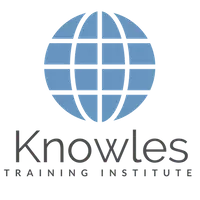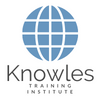
Table of Contents
Welcome, aspiring communication skills trainers! Embarking on a journey to empower others in the realm of effective communication is truly exhilarating. You’re about to embark on a path that not only transforms the lives of those you teach but also enriches your own soul. Get ready to embrace the wonders of communication as we dive into essential strategies that will pave your way to becoming a successful communication skills trainer. The heart of every outstanding trainer beats with passion. Let your enthusiasm for communication skills radiate through your teachings. Infuse your sessions with energy, engaging anecdotes, and genuine interest in your participants’ growth. Inspire them to break barriers, fostering an environment where communication is embraced with open arms and hearts. Remember, a one-size-fits-all approach rarely serves its purpose in the realm of communication. As a skilled trainer, observe and assess your participants’ unique strengths and weaknesses. Custom-tailor your training sessions to cater to their specific needs.

Be attentive, empathetic, and adaptive to ensure each individual thrives. Communication thrives in an atmosphere of trust and safety. Foster an environment where participants feel comfortable expressing themselves without fear of judgment. Encourage open discussions, active listening, and constructive feedback to nurture their confidence in communicating their thoughts and emotions effectively. Steer away from dull, monotonous lectures, and embrace interactive learning techniques. Incorporate role-plays, group activities, and real-life scenarios to bring communication concepts to life. Engage the senses and emotions of your participants to leave a lasting impact. Empathy is the heartbeat of communication. As a trainer, exemplify empathy in your interactions, and encourage participants to embrace it as well. Help them understand the power of listening and understanding from others’ perspectives, fostering stronger connections in both personal and professional settings. Constructive criticism is the stepping stone to improvement. Teach your participants to embrace feedback positively, using it as a tool for growth. Celebrate their progress and encourage resilience in the face of challenges, guiding them towards becoming confident and effective communicators. As a communication skills trainer, your own growth should never stagnate. Keep up with the most recent developments in communication research and trends.. Attend workshops, seek mentorship, and learn from fellow trainers to enhance your expertise continually.
Becoming a successful communication skills trainer is more than a profession; it’s a calling to transform lives through the power of effective communication. Infuse your teachings with passion, empathy, and tailored techniques. Nurture a safe, dynamic learning environment where participants flourish. As you inspire and guide others on their communication journey, remember to remain a perpetual student yourself, growing alongside your participants. Embrace this fulfilling vocation with heart and soul, and witness the profound impact your training has on those you touch. Good luck, and may your journey as a communication skills trainer be one of great joy and accomplishment! Stories are captivating vessels that can deliver powerful messages. As a communication skills trainer, master the art of storytelling to illustrate complex concepts and inspire your participants. Share personal anecdotes, fables, or even real-life success stories of individuals who have transformed their lives through effective communication. Emotionally engaging narratives create lasting impressions, making your training memorable and impactful. A successful communication skills trainer not only imparts knowledge but also fosters a sense of belonging among participants. Create a supportive community where individuals can connect, share experiences, and learn from one another. Encourage group discussions, peer coaching, and networking opportunities to build a cohesive and collaborative environment that extends beyond your training sessions. In today’s digital age, technology can enhance your training methods, but it must be used thoughtfully. Leverage interactive presentation tools, virtual communication platforms, and online resources to augment your sessions. However, always remember the importance of human connection in communication. Balance the use of technology with face-to-face interactions to preserve the authenticity and emotional depth of the learning experience.
Confidence is the backbone of effective communication. Help your participants cultivate self-assurance by celebrating their progress and highlighting their strengths. Encourage positive self-talk and teach them to combat self-doubt. A confident communicator can inspire trust and openness, making your training sessions transformative and empowering. As a communication skills trainer, your mission extends beyond the training room. Empower your participants to apply their newly acquired skills in real-world situations. Offer guidance on navigating difficult conversations, public speaking, and workplace interactions. Witnessing the practical impact of their newfound abilities will reinforce the value of your training and inspire a lasting commitment to honing their communication skills. Effective communication transcends cultural, social, and linguistic boundaries. Encourage participants to embrace diversity and inclusivity in their communication practices. Teach them to be mindful of different perspectives and sensitive to cultural nuances. By fostering an inclusive approach to communication, you contribute to a more connected and empathetic world.
Congratulations! You have journeyed through the heart and soul of becoming a successful communication skills trainer. Infuse your training with passion, empathy, and storytelling to create a lasting impact on your participants. Foster a supportive community that extends beyond the training room, and mindfully embrace technology while preserving the essence of human connection. Cultivate confidence, positivity, and a commitment to continual growth. Empower your participants with practical real-world applications and an appreciation for diversity and inclusivity. As you embark on this enriching path, remember that communication is not just a skill but a profound way to touch lives and shape futures. Embrace your calling with emotion and dedication, and you will undoubtedly flourish as a remarkable communication skills trainer. Good luck!

In the fast-paced and interconnected world of professional development, communication skills stand as mighty pillars, holding up the structure of success. From the moment we step into the workforce, the ability to communicate with clarity, empathy, and conviction becomes an essential asset that can catapult us towards greatness. Imagine a workplace where colleagues speak but never truly connect, where ideas are lost in the void of miscommunication, and where conflicts brew due to misunderstandings. Such a setting can create a heart-wrenching atmosphere, sapping the joy from work and stifling the potential of individuals. Communication skills training offers the lifeblood that can resuscitate a suffocating work environment. Through comprehensive workshops and hands-on exercises, professionals can learn to master the art of expression, breaking down the barriers that hinder productivity and collaboration.
As we delve into the nuances of effective communication, the richness of emotional intelligence emerges. Empathy, understanding, and active listening blossom like vibrant flowers, enhancing interactions between individuals and teams. Gaining proficiency in communication is not merely about stringing words together; it is about weaving narratives that captivate and inspire. The power to sway opinions and convey ideas with passion fuels innovation and drives progress. As we delve deeper into the realm of communication skills training, we uncover the ability to navigate through complex situations with finesse and tact. Diplomacy becomes a guiding compass, steering us away from misunderstandings and towards resolutions that preserve relationships and uphold harmony. A well-communicated vision can rally teams behind a common purpose, igniting passion and dedication. Leaders who excel in communication inspire loyalty and foster an environment where employees are motivated to give their best.
In a world where technology seems to bridge gaps effortlessly, the human touch of authentic communication remains unmatched. Voice inflections, facial expressions, and body language carry meaning that cannot be replicated by any device. Equipped with the art of persuasive communication, professionals can steer negotiations towards favourable outcomes. Empowered by their words, they can bridge divides and forge lasting partnerships, both within the organization and beyond. The impact of communication ripples through every layer of professional life. From job interviews where first impressions matter to delivering captivating presentations that leave audiences mesmerized, honing these skills transforms ordinary professionals into extraordinary influencers. Moreover, fostering a culture of effective communication within an organization fosters a sense of belonging and camaraderie. It nurtures an environment where every voice is heard, valued, and appreciated, encouraging innovation and diversity of thought. However, communication is not a one-way street; it demands active and empathetic listening. By embracing this virtue, professionals can build bridges of understanding, strengthening relationships and enhancing team dynamics. In contrast, poor communication can be a breeding ground for rumours and gossip, eroding trust and creating an atmosphere of uncertainty. A lack of effective communication can sow seeds of discord, leading to conflicts that drain an organization’s vitality. With communication skills training, professionals can transcend language barriers and bridge cultural divides. In today’s globalized world, the ability to communicate respectfully and sensitively with diverse audiences opens doors to international collaborations and opportunities.
The ability to convey constructive feedback with empathy is another vital aspect of communication skills training. By mastering this art, professionals can foster growth and development, nurturing a workplace that thrives on continuous improvement. Conflict resolution, an inevitable part of professional life, also rests upon the foundations of effective communication. Through open dialogue and a willingness to understand perspectives, conflicts can transform into opportunities for growth and reconciliation. Communication skills training transcends the workplace, enriching personal relationships and empowering individuals to express themselves with confidence and grace. It empowers introverts to find their voices, extroverts to refine their impact, and everyone in between to connect on a profound human level. In the ever-changing landscape of modern professional development, communication remains the timeless essence that fuels progress and fosters success. Furthermore, honing presentation skills empowers professionals to command attention and leave a lasting impact during meetings, conferences, and public speaking engagements. Captivating an audience requires not only well-structured content but also the emotional prowess to connect with listeners on a profound level. Incorporating storytelling into our communication arsenal infuses life into our messages, making them memorable and relatable. The power of a compelling narrative resonates deeply with others, sparking engagement and empathy.
So let us embrace communication skills training with passion and dedication, knowing that the power of our words can elevate us to new heights and inspire those around us. As we traverse the path of professional growth, let us remember that the journey is not solely about acquiring knowledge; it is about using that knowledge to communicate with profound emotion and connect with the world around us. The journey of mastering communication skills is a continuous one. It requires practice, self-awareness, and a willingness to learn from both successes and failures. Yet, with each step forward, the rewards are immeasurable, transforming not only careers but lives. In the grand tapestry of professional development, communication skills form the vibrant threads that weave stories of growth, connection, and achievement. Embracing these skills with emotion is the key that unlocks doors to endless possibilities. In conclusion, the profound significance of communication skills training in professional development is undeniable. As we traverse this transformative journey, let us approach it with hearts ablaze with passion and minds open to the wonders it can unlock. Communication skills enrich every facet of our professional lives, enabling us to connect with others on deeper levels, inspire positive change, and leave a lasting legacy. Embrace the journey of communication skills training, for it is the gateway to a world of possibilities where success and fulfillment await.
The role of a communication skills trainer is one that fills our hearts with a sense of purpose and responsibility. As trainers, we are driven by the profound impact that effective communication can have on individuals’ lives and their relationships with others. Our hearts are touched by the belief that being a highly effective communication skills trainer requires not only expertise in the subject matter but also a deep understanding of human emotions and the power of words. The thought of guiding individuals on a journey of self-discovery and personal growth through enhanced communication skills fills our hearts with the knowledge that we are empowering them to express themselves confidently and authentically. As we delve into the key qualities and attributes of a highly effective communication skills trainer, our hearts are moved by the importance of being an active and empathetic listener, creating a safe and supportive space for individuals to share their thoughts and feelings.

The recognition that effective communication is not just about speaking but also about understanding and interpreting non-verbal cues fills our hearts with the belief that being attuned to body language and facial expressions is crucial in fostering effective communication. Our hearts are touched by the potential of creating tailor-made training programs that cater to the unique needs and challenges of each individual, knowing that personalization leads to more meaningful and impactful learning experiences. The anticipation of witnessing individuals transform their communication skills, from hesitant to assertive, from unclear to confident, fills our hearts with excitement for the positive changes that await them. As we explore the integration of practical exercises and role-playing scenarios in our training, our hearts are moved by the potential to provide individuals with opportunities to practice and refine their communication skills in a safe and supportive environment.
The thought of fostering a growth mindset in individuals, encouraging them to embrace mistakes as learning opportunities, fills our hearts with the belief that setbacks are stepping stones to greater communication success. Our hearts are filled with gratitude for the opportunity to equip individuals with the tools and techniques to navigate challenging conversations, fostering healthier and more constructive relationships in their personal and professional lives. The recognition that being a highly effective communication skills trainer requires a genuine passion for helping others and a strong desire to make a positive impact on their lives fills our hearts with the knowledge that our work is more than just a profession; it is a calling. As we delve into the concept of fostering cultural sensitivity and inclusivity in our training, our hearts are moved by the importance of promoting communication that transcends barriers and unites individuals from diverse backgrounds. The thought of designing training programs that incorporate storytelling and real-life examples fills our hearts with the belief that relatable and relevant content sparks a deeper connection and understanding among participants. Our hearts are touched by the potential of building individuals’ confidence and self-esteem through effective communication, knowing that empowered communicators can achieve their goals and dreams with greater ease. The anticipation of witnessing how our training empowers individuals to become effective leaders and influencers in their communities fills our hearts with excitement for a future of positive change and transformation. As we explore the integration of technology and digital communication skills in our training, our hearts are moved by the potential to equip individuals with the tools to thrive in the digital age while maintaining authentic and meaningful connections.
The thought of fostering open and honest communication within teams and organizations fills our hearts with the belief that transparent and constructive dialogue lays the foundation for a healthy and thriving work environment. Our hearts are touched by the potential of designing training programs that encourage individuals to step out of their comfort zones, knowing that embracing vulnerability is the key to unlocking greater communication potential. The recognition that being a highly effective communication skills trainer is a lifelong journey of continuous learning and growth fills our hearts with the knowledge that we must constantly evolve to stay relevant and impactful in our training approach. With hearts brimming with passion, dedication, and a sense of purpose, we celebrate the art of being a highly effective communication skills trainer. As trainers, our commitment to empowering individuals with the gift of effective communication remains unwavering, knowing that communication is not just a skill; it is the essence of human connection and understanding. Our hearts are moved by the transformational power of effective communication, knowing that it has the ability to resolve conflicts, build trust, and create a more harmonious and collaborative world. The thought of fostering a growth mindset in our trainees, encouraging them to embrace continuous improvement and seize opportunities for self-development, fills our hearts with the belief that every individual has the capacity to become a master communicator. Our hearts are touched by the potential of incorporating mindfulness and emotional intelligence training into our communication programs, knowing that self-awareness and empathy are the building blocks of meaningful connections. As we explore the integration of creativity and innovation in our training, our hearts are moved by the understanding that breaking free from conventional communication patterns allows for more engaging and impactful interactions.
The anticipation of witnessing individuals overcome communication barriers and become more expressive and articulate fills our hearts with excitement for the profound changes that lie ahead for them. As we delve into the concept of fostering effective public speaking skills, our hearts are moved by the knowledge that helping individuals find their voice and share their ideas with confidence empowers them to become influential leaders and advocates. The thought of encouraging individuals to cultivate active curiosity and ask powerful questions fills our hearts with the belief that curiosity ignites a passion for learning and deepens interpersonal connections. Our hearts are touched by the potential of creating a supportive and encouraging learning environment, where individuals feel safe to express themselves authentically and without judgment. The recognition that being a highly effective communication skills trainer requires adaptability and flexibility in tailoring our approach to different learning styles and personalities fills our hearts with the knowledge that customization leads to optimal results. As we explore the integration of self-reflective practices in our training, our hearts are moved by the understanding that cultivating self-awareness allows individuals to identify their strengths and areas for growth in communication. The thought of designing training programs that instill a sense of assertiveness in individuals, enabling them to express their needs and boundaries confidently, fills our hearts with the belief that assertive communication is empowering and liberating. Our hearts are touched by the potential of incorporating storytelling and metaphors in our training, knowing that these powerful techniques can make complex ideas more accessible and resonate deeply with our trainees. The anticipation of witnessing how our training equips individuals with conflict resolution skills, enabling them to navigate difficult conversations with grace and compassion, fills our hearts with excitement for a future of more harmonious relationships.

In the dynamic world of training sessions, nonverbal communication takes center stage, resonating with powerful emotions that breathe life into the learning process. As a trainer, I am enthralled by the profound impact of nonverbal cues on the participants’ engagement, understanding, and emotional connection. From the sparkle in their eyes to the confident stance they adopt, I am attuned to the subtle nuances of nonverbal expressions that reveal the participants’ true feelings and receptivity. This heightened awareness allows me to adjust my approach, adapting to their needs and fostering a sense of trust and rapport. Gestures become the dance of comprehension, as I use my hands to illustrate concepts and ideas. The emotion surges through me as I see participants mirroring these movements, indicating their assimilation of knowledge and active involvement in the learning journey. The power of eye contact is undeniable.
Meeting the participants’ gazes, I connect with each individual on a deeper level, forging an unspoken bond that speaks volumes about the mutual respect and understanding between us. This connection brings immense joy and fulfillment to my role as a trainer. Through my body language, I strive to convey passion and enthusiasm, infecting the participants with the same fervor for learning. The energy in the room becomes electric as emotions of excitement and inspiration course through the training session. In moments of uncertainty or confusion, a reassuring smile from me can serve as an anchor, providing comfort and encouragement. Witnessing the participants’ anxiety dissipate and transform into a newfound sense of assurance fills me with pride and joy. Understanding the role of nonverbal communication also involves actively observing the participants’ body language. Their posture, facial expressions, and even subtle shifts in stance offer valuable insights into their engagement and emotional state. This heightened perception allows me to adapt and fine-tune my delivery, ensuring that every participant feels seen and heard. Nonverbal cues, when harnessed effectively, create an emotional symphony in the training session. The joy of orchestrating this symphony, guiding participants on a transformative journey of growth and learning, is what ignites my passion as a trainer. Emotions of fulfillment, connection, and purpose come together in perfect harmony as I embrace the profound role of nonverbal communication in training sessions. In the realm of training sessions, nonverbal communication emerges as a mesmerizing art form, weaving emotions and unspoken sentiments into the fabric of learning. As a trainer, I am captivated by the enchanting dance of nonverbal cues that dictates the rhythm of the session, evoking a symphony of emotions from participants.
The power of nonverbal communication lies in its ability to transcend language barriers and reach the core of human connection. When I enter the training room, I am keenly attuned to the unspoken signals emanating from the participants. Their body language, facial expressions, and gestures reveal a myriad of emotions, from excitement to apprehension, curiosity to eagerness. A simple nod of agreement or a gentle head tilt of curiosity speaks volumes about the participants’ engagement and receptivity. The thrill of witnessing these nonverbal affirmations fuels my passion as a trainer, knowing that my message is resonating on a deeper level. In moments of confusion or uncertainty, I rely on nonverbal cues to gauge the participants’ understanding. Furrowed brows, slight squints, or even hesitant hand movements guide me in addressing their concerns and reinforcing key points. The sense of accomplishment that washes over me when I witness these cues evolve into expressions of clarity and enlightenment is unparalleled. Nonverbal communication also serves as a powerful tool for building trust and rapport. A warm, genuine smile upon entering the room sets the tone for an inclusive and welcoming environment. My eyes lock with theirs, creating an intimate connection that fosters an atmosphere of mutual respect and support. The participants’ relaxed postures and open gestures become a testimony to the safe space we have created together.
As a trainer, my own nonverbal communication becomes a conduit for passion and enthusiasm. The spark in my eyes and the animated movements of my hands convey the fervor I feel for the subject matter. Observing the participants mirror this energy brings a sense of joy and validation, knowing that my enthusiasm is contagious and igniting their own excitement for learning. Understanding the role of nonverbal communication also means recognizing its limitations. Silence and stillness are just as powerful as speech and movement. Moments of reflection and introspection allow the participants to process and internalize the information, a sacred space for personal growth and transformation. As a trainer, the profound impact of nonverbal communication during training sessions fills me with awe and fascination. It is an art form that transcends language, giving voice to unspoken emotions and creating an unbreakable connection with participants. From the moment I step into the training room, I am attuned to the subtle cues that participants emit, reflecting their engagement and receptivity. Nonverbal communication reveals the true essence of human emotions, like a secret language only the heart can understand. A nod of agreement or a smile of encouragement from a participant sends a surge of pride and joy coursing through my veins, affirming that my message is being heard and understood on a profound level.
On the flip side, detecting signs of confusion or uncertainty in furrowed brows or hesitant gestures drives me to fine-tune my training approach and ensure that every participant feels supported and valued. The rewarding moment when I witness those nonverbal cues transform from uncertainty to clarity ignites my passion as a trainer and reaffirms the transformative power of effective communication. Establishing trust and rapport is at the heart of successful training, and nonverbal communication is the key. A warm and welcoming smile, a firm handshake, or maintaining eye contact signals to participants that they are in a safe and respectful environment. When participants respond with open body language and engaged expressions, it creates an electric atmosphere of mutual respect and shared learning. As a trainer, my own nonverbal cues are equally vital. Enthusiasm exudes from every pore as I passionately deliver the material, and the participants mirror this energy, turning the training room into a vibrant hub of excitement and inspiration. The silence in the room holds just as much power as the spoken word. Introspective moments allow participants to internalize the information, sparking their own epiphanies and personal growth. These moments of quiet contemplation stir my emotions, knowing that the training has touched their hearts as well as their minds. In conclusion, understanding the profound role of nonverbal communication in training sessions is an emotional journey that bridges hearts and minds. The unspoken language of emotions and gestures weaves an intricate connection between the trainer and participants, creating an unforgettable and transformative learning experience. As a trainer, witnessing the power of nonverbal communication in fostering engagement, trust, and personal growth fills me with deep gratitude and a sense of purpose in my role. It is a dance of emotions, an unspoken dialogue, and a testament to the remarkable power of human connection.
In a world that is increasingly connected yet paradoxically divided, the need for genuine empathy and active listening has become more crucial than ever before. Communication, the art of conveying thoughts, feelings, and ideas, serves as the lifeblood of human interaction. However, it is not merely the words we speak that define our conversations; rather, it is the way we listen and understand one another that truly shapes the quality of our relationships. In this essay, we explore the profound significance of empathy and active listening in communication skills training and delve into the transformative power they hold in fostering deeper connections and fostering a compassionate society. At its core, empathy is the ability to put ourselves in the shoes of others, to see the world through their eyes, and to genuinely understand their emotions and experiences. It is not a mere sympathetic nod or a hollow expression of condolences. Instead, empathy is an intricate and profound human capacity that requires active cultivation and nurturing. To foster empathy in communication, we must recognize that each person carries their unique set of struggles, dreams, and fears.

By actively acknowledging and validating their emotions, we pave the way for a more compassionate and supportive exchange of ideas. One of the most potent tools in the arsenal of an empathetic communicator is active listening. It is the art of being present in the moment, fully engaged with the speaker, and attentive to every word, tone, and gesture. Active listening goes beyond just hearing the words; it involves grasping the emotions that underlie them, even when they remain unspoken. When we actively listen, we demonstrate our respect for the other person’s perspective, creating an environment of trust and openness where they feel safe to express themselves authentically. In a society that often glorifies self-expression and personal success, the true essence of communication seems to be lost. We find ourselves eagerly waiting for our turn to talk, formulating responses in our minds before the other person finishes speaking. In such a fast-paced and competitive world, empathetic communication can appear time-consuming and inefficient. But let us pause and reflect on the missed opportunities and the broken connections that arise from this hurried approach to conversation. Consider a scenario where someone shares their struggles and hardships, and the response they receive is a dismissive comment or unsolicited advice. Instead of feeling understood and supported, they might experience a profound sense of loneliness and isolation. On the other hand, imagine a situation where a person’s emotions and experiences are received with empathy and active listening. The transformative impact of such a response cannot be overstated – it lays the foundation for emotional healing, nurtures trust, and strengthens the bond between individuals. Empathy and active listening transcend personal interactions and extend their reach into the broader fabric of society. In professional settings, these qualities have the potential to elevate teamwork, productivity, and innovation. When leaders prioritise empathetic communication, they create an inclusive work environment where employees feel valued and appreciated for their unique contributions. This, in turn, leads to higher levels of employee satisfaction, loyalty, and ultimately, organisational success.
In educational institutions, empathy and active listening can revolutionise the learning experience. Students thrive in environments where their voices are heard, where teachers understand their individual needs, and where their struggles are met with compassion. By integrating these essential communication skills into the educational system, we can nurture a generation of empathetic and socially conscious individuals who strive for positive change in the world. Empathy and active listening also play a pivotal role in resolving conflicts and promoting peace on a global scale. When nations engage in diplomatic dialogues with genuine empathy, they can better understand each other’s perspectives, build bridges of trust, and work collaboratively towards resolving complex issues. The absence of empathy, on the other hand, can lead to misunderstandings, animosity, and even violence. In communication skills training, fostering empathy and active listening requires a holistic approach. Firstly, individuals must develop self-awareness, understanding their own emotions and biases. When we can recognize and manage our feelings, we become better equipped to extend the same sensitivity to others. Secondly, we need to cultivate curiosity about the experiences of others. Asking open-ended questions and showing genuine interest in their stories demonstrates our commitment to understanding and validating their feelings.
Furthermore, communication training must emphasise the importance of patience and mindfulness. In today’s fast-paced world, we are often driven by the desire for quick solutions and instant gratification. However, building empathy and mastering active listening is a journey that requires time and effort. It involves breaking old communication patterns and learning to be fully present in each interaction. Incorporating role-playing exercises and interactive sessions can also prove invaluable in communication skills training. By simulating real-life scenarios, individuals can practise their empathetic responses and refine their active listening skills in a safe and controlled environment. Additionally, feedback and reflection sessions allow participants to gain insights into their strengths and areas for improvement, further honing their abilities to connect on a deeper level.
In conclusion, empathy and active listening are not mere soft skills but the bedrock of effective and meaningful communication. They are the threads that weave the fabric of understanding and compassion in the tapestry of our lives. As we navigate a world rife with division and discord, it is our responsibility to champion these transformative qualities and incorporate them into our daily interactions. Building empathy and active listening in communication skills training is not just about becoming better conversationalists; it is about sowing the seeds of empathy in our hearts and minds. When we embrace the perspectives of others, listen with compassion, and respond with genuine understanding, we take significant strides toward creating a world where empathy reigns, connections flourish, and the light of human kindness shines brightly. Let us, therefore, embark on this journey together, making empathy and active listening the cornerstones of our interactions, and witness the profound change they can bring to our lives and the world at large.

In the diverse world we live in today, cross-cultural communication is becoming increasingly vital in various industries. While it opens up opportunities for collaboration and growth, it also poses challenges that must be overcome to foster understanding and cooperation among individuals from different cultural backgrounds. One of the key barriers in cross-cultural training environments is language differences. Language is not just about the spoken word but also includes non-verbal cues and gestures. Misinterpretations can lead to misunderstandings and even offense, creating emotional distance between individuals. Aspiring trainers in such environments must be sensitive to these nuances, ensuring effective communication that fosters emotions of trust and respect. Cultural norms and practices also vary greatly across different regions, leading to potential clashes and conflicts. Body language, eye contact, and even the concept of time can differ significantly from one culture to another.
Trainers must be empathetic and open-minded, creating an emotionally safe space for participants to share their perspectives and cultural practices without judgment. Stereotypes and preconceptions about certain cultures can also act as barriers in cross-cultural training. It is essential for trainers to challenge these stereotypes and create a space for authentic, individualized experiences that promote emotional intelligence and empathy. Moreover, communication styles can differ drastically among cultures. Some may emphasize directness and assertiveness, while others value indirectness and politeness. Trainers must adapt their communication approach, using emotional intelligence to gauge the needs and preferences of their audience and foster a connection. In cross-cultural training environments, language translation and interpretation services can be instrumental in bridging communication gaps. Utilizing these services ensures that information is conveyed accurately and comprehensively, fostering emotions of inclusivity and accessibility for all participants. Cultural competence and awareness training for trainers themselves is essential. This involves educating trainers about different cultures, historical backgrounds, and social norms. Building this emotional intelligence equips trainers to address cultural differences with sensitivity and humility, promoting a culture of respect and understanding. Incorporating visual aids and interactive activities can also help overcome communication barriers. Visual aids transcend language barriers and provide a shared reference point for all participants. Interactive activities promote emotions of engagement and participation, allowing individuals to connect with the content on a personal level.
Listening is a powerful tool in overcoming communication barriers. Trainers must actively listen to their participants, allowing emotions of trust and vulnerability to flourish. This two-way communication creates a safe space for participants to express their thoughts and emotions freely. Flexibility is crucial in cross-cultural training environments. Trainers must be open to adapting their content and delivery based on the emotional and cultural needs of the participants. This flexibility fosters emotions of appreciation and acceptance, creating an atmosphere of collaboration and mutual learning.
Understanding the context of the training and the specific goals of the participants is vital. Trainers must take the time to explore the emotional backgrounds and experiences of their audience, allowing them to tailor the training to meet their unique needs. Embracing a growth mindset is essential for trainers in cross-cultural environments. Acknowledging that there may be challenges along the way, and that mistakes may occur, creates emotions of resilience and determination to improve. Promoting a culture of respect and inclusivity is the cornerstone of overcoming communication barriers. Trainers must set the emotional tone for the training, demonstrating that all voices are valued and that diversity is an asset.
Peer learning and group activities can be powerful tools in breaking down barriers and fostering emotional connections. Encouraging participants to learn from each other’s experiences and perspectives can promote feelings of camaraderie and understanding. Lastly, continuous evaluation and feedback are crucial in overcoming communication barriers. Trainers must seek feedback from participants on their experiences and emotions, using this information to make improvements and ensure the training remains relevant and impactful. By employing these strategies and approaches, trainers can overcome communication barriers in cross-cultural environments, creating an emotionally enriching and transformational experience for all participants. Through genuine connection and cultural awareness, cross-cultural training can become a powerful tool for fostering unity and collaboration in our diverse world.
In the ever-evolving landscape of communication skills training, the integration of technology evokes emotions of excitement and anticipation, offering transformative possibilities to enhance learners’ abilities to connect and engage effectively. One emotional aspect of incorporating technology into communication skills training lies in the potential for interactive learning experiences. The emotional resonance of engaging in these interactive elements fosters a sense of empowerment, as learners gain confidence in their ability to articulate ideas, actively listen, and navigate conversations with ease. Moreover, the emotional impact of technology-enhanced communication skills training is evident in the opportunity for personalized learning journeys. Technology allows trainers to tailor content and activities to meet the unique needs and preferences of individual learners. This personalization fosters a sense of value and support, as learners experience communication skills training that is relevant and meaningful to their specific goals and aspirations. Furthermore, technology offers a plethora of tools to provide timely and constructive feedback to learners.

Video assessments and AI-powered feedback systems enable learners to receive real-time evaluations of their communication performance. Witnessing their growth and progress through feedback fosters emotions of accomplishment and motivation, encouraging learners to continuously improve their communication skills. Additionally, the emotional connection between technology and communication skills training lies in the potential to break down geographical barriers. Online platforms and virtual classrooms enable learners from diverse locations to come together, fostering a global community of communicators. This sense of connectivity and shared experiences cultivates empathy and understanding among learners from different backgrounds and cultures. The emotional aspect of technology-enhanced communication skills training extends to the realm of flexibility and accessibility. Learners can access training materials and resources at their own pace and convenience, accommodating busy schedules and varying learning styles.
This flexibility evokes emotions of empowerment and determination, as individuals take ownership of their learning journey. Furthermore, technology offers a wealth of multimedia tools that enhance the learning experience. Engaging visual aids, audio recordings, and interactive presentations capture learners’ attention and reinforce key concepts. The emotional impact of these multimedia elements lies in their ability to make communication skills training engaging, memorable, and enjoyable. The emotional resonance of incorporating technology into communication skills training programs is also evident in the opportunity for continuous learning and improvement. Online resources, webinars, and virtual workshops provide learners with ongoing support and insights, inspiring a culture of lifelong learning and growth. Moreover, technology enables communication skills trainers to track learners’ progress and performance through data analytics. Analyzing learners’ strengths and areas for improvement allows trainers to tailor their coaching and support, fostering a sense of individualized attention and care.
In addition to personalized learning, the emotional impact of technology-enhanced communication skills training lies in its potential for adaptive learning. Furthermore, the emotional connection forged between learners and trainers is deepened through technology. Virtual coaching sessions, online forums, and chat platforms create opportunities for direct interaction and support. The emotional fulfillment of receiving guidance and encouragement from trainers fosters a sense of trust and rapport between learners and trainers. The emotional aspect of technology in communication skills training extends to the cultivation of emotional intelligence. Virtual reality simulations and AI-driven emotional recognition tools provide learners with the opportunity to practice empathy, active listening, and emotional awareness.
The emotional resonance of these experiences enhances learners’ ability to connect authentically with others and respond empathetically to their needs and feelings. In conclusion, utilizing technology to enhance communication skills training programs is an emotionally charged journey of transformation and empowerment. The integration of interactive learning, personalized experiences, multimedia tools, and data analytics opens a world of innovative possibilities for learners and trainers alike. The emotional resonance of technology lies in its ability to foster meaningful connections, cultivate empathy, and inspire a culture of continuous learning and growth.

Assessing and measuring the impact of communication skills training on participants is an emotionally charged journey of discovery and growth. As trainers embark on this mission, they understand the profound significance of effective communication in shaping individuals’ personal and professional lives. The emotional connection to this endeavor fuels their dedication to ensuring that every participant experiences transformational growth. The journey begins with defining clear and emotionally resonant learning objectives. Trainers understand that effective communication is not just about speaking; it is about forging genuine connections and building bridges of understanding. As participants immerse themselves in the training, trainers witness a myriad of emotions – excitement, curiosity, and a desire to improve. This emotional engagement sets the stage for profound learning experiences. Throughout the training, trainers utilize various assessment methods to gauge participants’ progress. Emotional intelligence allows them to sense participants’ receptivity, ensuring that the training aligns with their needs and learning styles.
Emotional empowerment takes center stage as participants practice newfound communication techniques. Trainers witness a surge of confidence as participants overcome communication barriers and embrace assertiveness. The impact of communication skills training becomes evident in participants’ body language and tone of voice. Trainers observe how their emotional expressions align with the message, fostering authenticity and credibility. As participants engage in role-playing and group discussions, trainers observe a sense of camaraderie and mutual support. Emotional connections formed during training create a supportive and safe learning environment. Trainers use pre-and post-training assessments to measure changes in participants’ communication competencies. The emotional journey from self-awareness to self-improvement is evident in the results. Emotional intelligence is a key focus during communication skills training, and trainers celebrate participants’ growth in recognizing and managing emotions during interactions. The emotional resonance of active listening becomes apparent as participants demonstrate empathy and understanding during training exercises. Trainers witness the power of attentive listening in fostering meaningful connections.
Communication skills training also impacts non-verbal communication. Trainers observe a transformation in participants’ body language, enhancing the emotional impact of their messages. As participants apply their newly acquired skills in real-life scenarios, trainers witness the emotional fulfillment of effective communication. This fosters a sense of pride in participants and reinforces the importance of continued practice. Post-training feedback sessions become emotionally charged as participants share stories of how communication skills have positively influenced their personal relationships and professional success. Trainers also recognize the emotional impact on workplace dynamics. Participants report enhanced teamwork, reduced conflicts, and increased trust among colleagues. As trainers analyze the data and gather testimonials, they feel a profound sense of fulfillment. The evidence of improved communication skills validates their efforts and the transformational journey participants have undertaken. The emotional bond forged between trainers and participants is evident as the journey concludes. Participants express gratitude for the training that has empowered them to communicate effectively and make a lasting impact in their lives.
The emotional resonance of communication skills training extends beyond the participants. Trainers witness how improved communication ripples through the organization, fostering a culture of openness and collaboration. The impact of communication skills training goes far beyond the workplace. Trainers are deeply moved by stories of how participants’ improved communication has enriched their personal relationships and brought newfound confidence in social settings. Trainers celebrate participants’ continued growth and practice of communication skills long after the training ends. The emotional fulfillment of knowing they have equipped individuals for life-long success is immeasurable.
The assessment journey fuels trainers’ dedication to continuous improvement. They understand that effective communication is an ever-evolving skill, and they are committed to staying at the forefront of communication trends and best practices. As the impact of communication skills training reverberates through the lives of participants, trainers are emotionally inspired to continue their mission. They know that empowering individuals with effective communication is not just about conveying messages, but about fostering understanding, empathy, and genuine human connection that can transform lives in ways beyond measure.
Begin an enriching voyage towards mastering the art of communication! This comprehensive guide beckons you to immerse yourself in the enthralling world of communication skills workshops, where transformative potential awaits. Effective communication transcends mere words, embracing the dynamic interplay of emotions, empathy, and understanding. Throughout this course, we shall unveil twelve invaluable tips, not only igniting the flames of inspiration and motivation within learners but also empowering them to forge genuine connections in both personal and professional realms. Together, let us venture forth, unearthing the hidden truths that unlock the true power of communication. To commence, we shall cultivate a warm and inclusive atmosphere, fostering an environment where learners can freely express themselves sans the shackles of judgment. Embracing the uniqueness of each participant and nurturing open dialogue shall pave the way for authentic and meaningful learning experiences.

Moreover, we shall delve into the art of captivating learners’ emotions through the powerful tool of storytelling. Sharing personal anecdotes and encouraging reciprocal sharing shall sow the seeds of profound empathy and understanding among participants. Next, we shall embark on exploring the significance of active listening and its profound impact on effective communication. Employing role-playing activities, learners shall step into both the speaker’s and listener’s shoes, honing their ability to empathize and comprehend diverse perspectives. Behold the potency of positive reinforcement! Praise and recognition shall be showered upon learners when they exhibit effective communication skills during activities or discussions. By acknowledging their progress, a positive learning environment shall thrive, nurturing confidence and stimulating further engagement. Furthermore, we shall elevate engagement by weaving captivating visual aids, such as infographics or videos, into the fabric of the course. Visuals shall awaken the learners’ imagination, inspiring creative thoughts and concepts. Witness the flourishing of camaraderie and teamwork as we encourage learners to collaborate on group projects or engage in collaborative discussions. Such activities shall nurture a supportive learning environment, fostering the blossoming of confidence in sharing ideas. Finally, let us empower learners to conquer the dread of public speaking through the imparting of effective techniques and ample practice opportunities. Observing their progress shall ignite the flames of accomplishment and motivation, setting them on the path of assured communication.
Underscore the utmost importance of emotional intelligence in communication. Learners shall be instructed to deftly identify and regulate their emotions, all while embracing empathy and responding sensitively to others’ feelings. In so doing, communication effectiveness shall be enhanced, nurturing deeper connections both in personal and professional realms. Enhance the learning experience’s relatability by incorporating real-world scenarios, encouraging learners to apply their skills practically. This approach infuses relevance and sparks curiosity. Delve into the potency of empathy within effective communication. Guide learners to step into others’ shoes, understanding their emotions and perspectives. Cultivating empathy nurtures meaningful connections and fosters a culture of compassion and understanding. Commemorate each learner’s progress and growth, accentuating their accomplishments during the workshop. Positive reinforcement elevates self-esteem and fuels a yearning for further improvement. Commence each workshop with lively icebreaker activities to break down barriers and energize the participants. Icebreakers help create a vibrant atmosphere and strengthen the sense of community. Highlight the importance of embracing diversity and inclusivity in communication workshops. Encourage participants to appreciate different perspectives and cultural backgrounds, fostering an atmosphere of respect and understanding. Embracing diversity enriches the learning experience and opens up new avenues for creativity and innovation.
Guide learners to introspect and evaluate their communication strengths and areas for improvement. Encouraging self-reflection fosters self-awareness and fuels the drive to excel. Address common communication barriers, such as language differences, listening obstacles, or nonverbal misunderstandings. Offer practical strategies to overcome these challenges, empowering learners to navigate complex communication scenarios with confidence and grace. As the workshop facilitator, embody the principles of effective communication through your own interactions. Model active listening, empathy, and clarity, inspiring learners to emulate these skills. Discuss the significance of nonverbal cues in communication. Guide learners on interpreting and utilizing body language effectively to reinforce their verbal messages. Understanding body language helps learners become more perceptive communicators and strengthens their overall expressive abilities. Instill a passion for continuous learning by emphasizing that communication skills are an ongoing journey. Encourage learners to seek opportunities for self-improvement even beyond the workshop, nurturing a lifelong learning mindset. Delve into the profound impact of empathetic communication on relationships and personal growth. Discuss how active listening and understanding others’ emotions can resolve conflicts, strengthen connections, and create a more compassionate society. Present the significance of providing and receiving constructive feedback within communication workshops. Instruct learners on delivering feedback that is supportive, specific, and fosters personal growth. Underline the value of constructive criticism in honing their communication abilities.
Congratulations! You’ve arrived at the culmination of this emotionally charged course, designed to captivate and motivate learners in communication skills workshops. By implementing these twelve invaluable tips, you’ll facilitate a transformative learning experience that leaves participants feeling inspired, confident, and well-prepared to navigate the realm of communication with passion. Always remember, the potency of emotions in learning knows no bounds; infuse your workshops with genuine enthusiasm and authenticity to unlock the full potential of each learner. Encourage learners to perceive communication challenges as opportunities for growth and resilience. Remind them that effective communication is a skill honed through persistent practice and perseverance. By fostering resilience, learners will gain the confidence to surmount obstacles and communicate assuredly in any life situation. Inspire learners to reflect upon their progress and newfound confidence in communication. Reinforce the idea that cultivating robust communication skills is an ongoing journey, and their commitment to improvement will yield greater success in both personal and professional relationships.

Welcome to this transformative training session on communication skills! Here, we delve into the crucial aspect of addressing conflict resolution and navigating difficult conversations. Communication lies at the heart of every relationship, and this course aims to empower you with the emotional intelligence and tools necessary to tackle conflicts head-on. We’ll explore the art of expressing emotions effectively and empathetically, fostering an environment of understanding and connection. Conflict resolution can be daunting, but fear not, as we journey together through the labyrinth of emotions and words. The key to successful resolution lies in acknowledging our feelings and embracing vulnerability. Throughout this course, we’ll encourage a safe space to express your emotions, sharing experiences that touch the core of human connections. Buckle up for an exhilarating rollercoaster ride through the highs and lows of difficult conversations!
As we delve into the depths of communication dynamics, expect to be challenged, inspired, and empowered. The emotional rollercoaster of these conversations will test your resilience and leave you more confident to navigate through stormy waters with grace and finesse. Discover the profound impact of active listening and the power of genuine empathy in fostering understanding. As we unlock the intricacies of body language, tone, and unsaid emotions, our journey will be one of self-discovery and personal development. With the help of these realizations, you’ll be able to pick up on the feelings of others and establish a verbal-free emotional connection.
Prepare to embrace the unexplored corners of your emotional landscape as we explore your reactions to conflict. Dive into introspective exercises that shed light on your emotional triggers, allowing you to respond with composure in the face of adversity. Together, we’ll cultivate emotional resilience, ensuring you emerge from every conversation stronger and more empathetic than ever. Engage in interactive role-playing exercises that mirror real-life scenarios, where emotions are raw, and words hold immense power. Embrace the challenge of advocating your perspective while fostering a harmonious resolution. Your heart will race, your mind will spin, but rest assured, we’ll guide you towards a place of mutual understanding and respect. As you navigate through the emotional turbulence of difficult conversations, remember that growth often springs from discomfort. Embrace the uncertainty and vulnerability as you step out of your comfort zone. Our supportive environment ensures that every stumble becomes a stepping stone towards better communication and lasting relationships. Congratulations on completing this empowering journey through conflict resolution and difficult conversations! Embrace the transformation you have undergone, armed with newfound emotional intelligence and communication skills. You are now equipped to face any challenge with courage and grace, ensuring that every interaction becomes an opportunity for profound connection and personal growth. Remember, emotions are the essence of communication; embrace them, and you’ll conquer the world of effective and empathetic communication.
Beyond the mechanics of communication lies the heart and soul of our shared humanity. In this course, we delve into the emotional fabric that weaves us together, celebrating the diversity of emotions that enrich our interactions. We acknowledge that addressing conflicts and navigating difficult conversations can be emotionally taxing, but it is precisely through these challenges that we forge deeper connections and understanding. Embrace the vulnerability, for it is in our vulnerability that we find strength and compassion. Throughout this journey, you’ll witness the profound power of words in shaping our relationships. Words have the potential to build bridges or erect barriers, and we’ll empower you to choose wisely. Experience the euphoria of genuine understanding and the poignant ache of misunderstandings; each emotion encountered is a stepping stone towards mastery of communication and conflict resolution. Within this nurturing environment, your emotions will be celebrated, cherished, and respected. We honour the authenticity of every participant, recognizing that emotions, though complex, hold the key to unlocking the doors of understanding. Together, we’ll create a tapestry of empathy and emotional awareness, forming a cohesive community of communicators who value emotional connection.
As you embark on this emotional journey, remember that conflict, far from being a sign of failure, presents an opportunity for growth and transformation. Through insightful discussions and soul-stirring reflections, we encourage you to embrace the emotions that surface during difficult conversations. Discomfort often signifies the birth of insight, and with our guidance, you’ll emerge with newfound emotional dexterity. Picture yourself in the midst of a riveting debate, emotions swirling like a tempest around you. With our guidance, you’ll learn the art of anchoring yourself amidst the chaos, transforming emotional turbulence into a guiding compass. Channel the fervor of your emotions into constructive dialogue, for it is in these crucibles that lasting resolutions are forged. The emotions you experience throughout this course are not isolated occurrences but rather the embers that fuel the fires of authentic connection. Embrace the power of empathy and the catharsis of emotional expression, for these are the keys that unlock the doors to impactful communication. Armed with newfound emotional intelligence, you’ll navigate future conversations with renewed vigour and genuine care, knowing that the pursuit of understanding and resolution is a testament to the human spirit.





